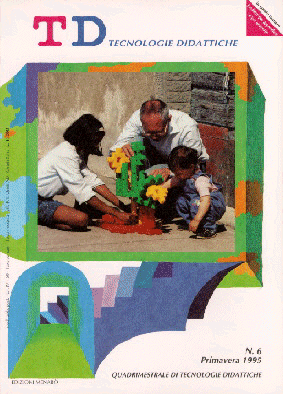La struttura dei contenuti nello sviluppo di courseware
Contenuto principale dell'articolo
Abstract
Dettagli dell'articolo
Gli autori che pubblicano su questa rivista accettano le seguenti condizioni:
- Gli autori mantengono i diritti sulla loro opera e cedono alla rivista il diritto di prima pubblicazione dell'opera, contemporaneamente licenziata sotto una Licenza Creative Commons CC BY 4.0 Attribution 4.0 International License.
- Gli autori possono aderire ad altri accordi di licenza non esclusiva per la distribuzione della versione dell'opera pubblicata (es. depositarla in un archivio istituzionale o pubblicarla in una monografia), a patto di indicare che la prima pubblicazione è avvenuta su questa rivista.
- Gli autori possono diffondere la loro opera online (es. in repository istituzionali o nel loro sito web) prima e durante il processo di submission, poiché può portare a scambi produttivi e aumentare le citazioni dell'opera pubblicata (Vedi The effect of Open Access).
Riferimenti bibliografici
Bloom B.S. (ed.) (1956), Taxonomy of Educational Objectives, David Mc Kay, New York
Ferraris M., Midoro V., Olimpo G. (1984), Petri Nets as a Modelling Tool in the Development of CAL Courseware, Computers and Education, Vol. 8, n. 1
Gagné R.M. (1973), Le condizioni dell’apprendimento, Armando editore, Roma
Gagné R.M. (1985), The conditions of learning (4° Edizione), CBS College Publishing, New York
Jantzen, M. (1980), Structural Representation of Knowledge by Petri Nets as an Aid for Teaching and Research,in: Net Theory and Applications, Springer-Verlag, Berlino
Jones M.K., Li Z., Merril M.D. (1990), Domain Knowledge Representation for Instructional Analysis, Educational Technology
Landa L. (1974), Algoorithmization in Learning and Instruction, Prentice Hall, Englewood Cliffs
Merril M.D. (1983), Component Display Theory, in Reigeluth C.M. (ed.), Instructional Design Theories and Models, Lawrence Erlbaum, Hillsdale
Olimpo G. (1986), The Computer in the Evaluation of Learning, in: Designing Computer Based Learning Material, Springer-Verlag, Berlino
Pask G. (1976), Conversation Theory Applications in Education and Epistemology, Elsevier, Amsterdam
Trentin G. (1992), Case study: Supporting the Structuring of Personal Knowledge with Computers, Educational & Training Technology International, Vol. 29, n. 4

